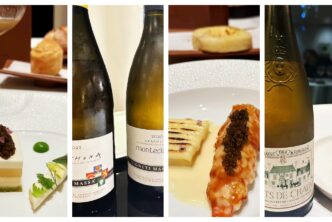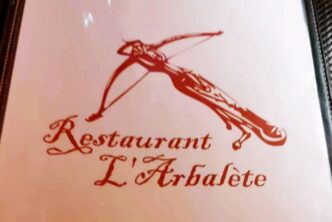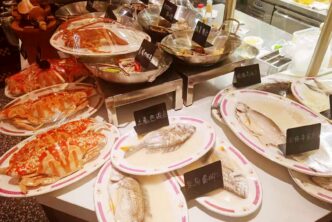Auberge de l’Ill
2 rue de Collonges au Mont D Or, 68970 Illhaeusern, France
Tel. +33 3 89 71 89 00
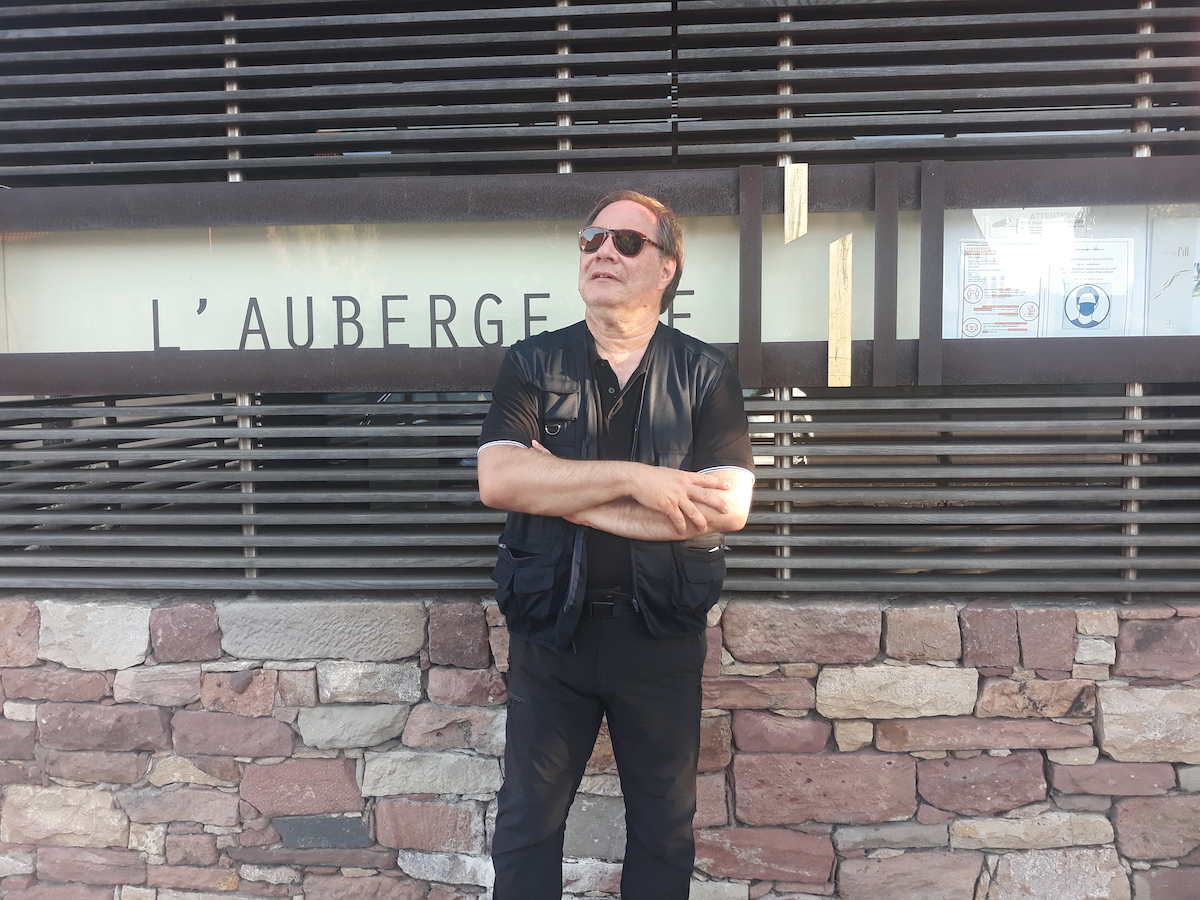
Over the years I have been to, and have written about, Alsace’s magnificent Auberge de l’Ill restaurant (the Ill is the very pretty, lazily meandering river on the banks of which the restaurant is situated) so many times I’m not sure I have anything else left to say or write. But in fact, every time I go back, the marvel that is a perfectly run dining establishment makes the experience totally new and magical once again. So much so that I never tire of eating at Auberge de l’Ill and try to visit as often as possible (one year not so long ago four different times, and I don’t even live in France).
The restaurant is housed in a very beautiful villa that offers outdoor seating perfect for an early evening aperitif prior to moving inside for the rest of the night’s meal, only to move outwards again (weather permitting) to enjoy desserts or after dinner drinks. For sure, sitting by the river’s edge, ensconced in a Corot-like passage of weeping willows, ebbs and pools, tall grasses and more, is one of the more romantic dining experiences you’ll live through in your life time. Today, Auberge de l’Ill is run smoothly and competently by Marc Haeberlin (in the kitchen) and Danielle Baumann-Haeberlin (at the reception), aided by a long time and extremely competent staff. The family also runs the nearby Hotel des Berges, a perfect spot to call it a night should one wish not to drive home or to the hotel after a long meal. Until very recently, l’Auberge de l’Ill was the second longest running three Michelin star restaurant in France; that the place was demoted in score a few years ago [(while very cramped establishments where you sit hugging the total stranger at the table next to yours, or still others where the food is (to put it charitably) very faddish but very forgettable were laughably being promoted)] is more a comment on the state of restaurant guides today than it is on Auberge de l’Ill. Which, to be crystal-clear, is one of the world’s best restaurants.
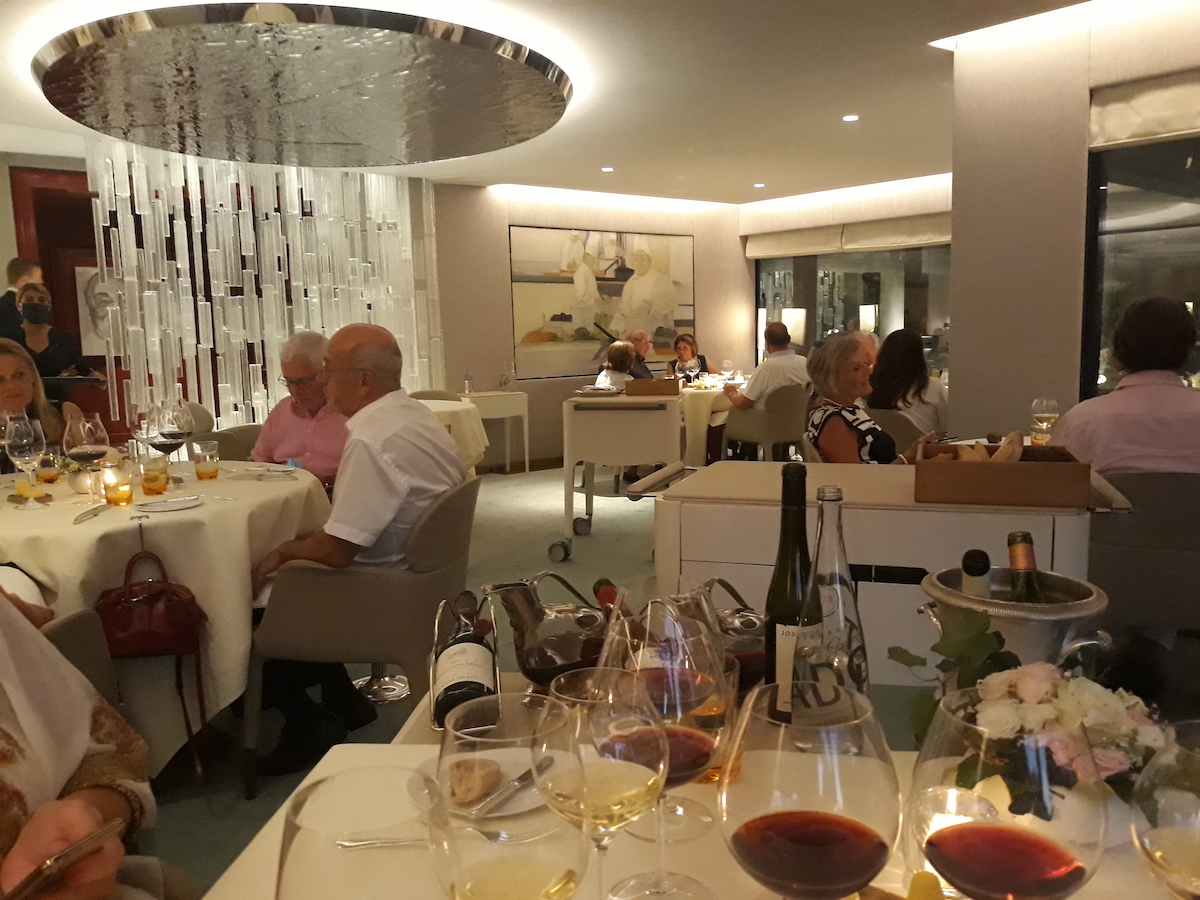
Actually, for all its culinary relevance and wizardry, Auberge de l’Ill’s history does not go that far back. It was founded as such only in 1950 by Paul and Jean-Pierre Haeberlin, but in fact current owner’s Marc Haeberlin’s great-grandparents had launched a country inn called l’Arbre Vert already in 1882. In 1945, a World War II bombing blew the construction up, and so Paul and Jean-Pierre Haeberlin rebuilt the restaurant in the same spot, renaming it Auberge de l’Ill. With Paul Haeberlin as the chef and Jean-Pierre as the maître, Auberge de l’Ill became one of the world’s most storied and famous dining destinations, a temple to fine cuisine where some of the world’s most famous chefs of today all studied and learned part of their craft.
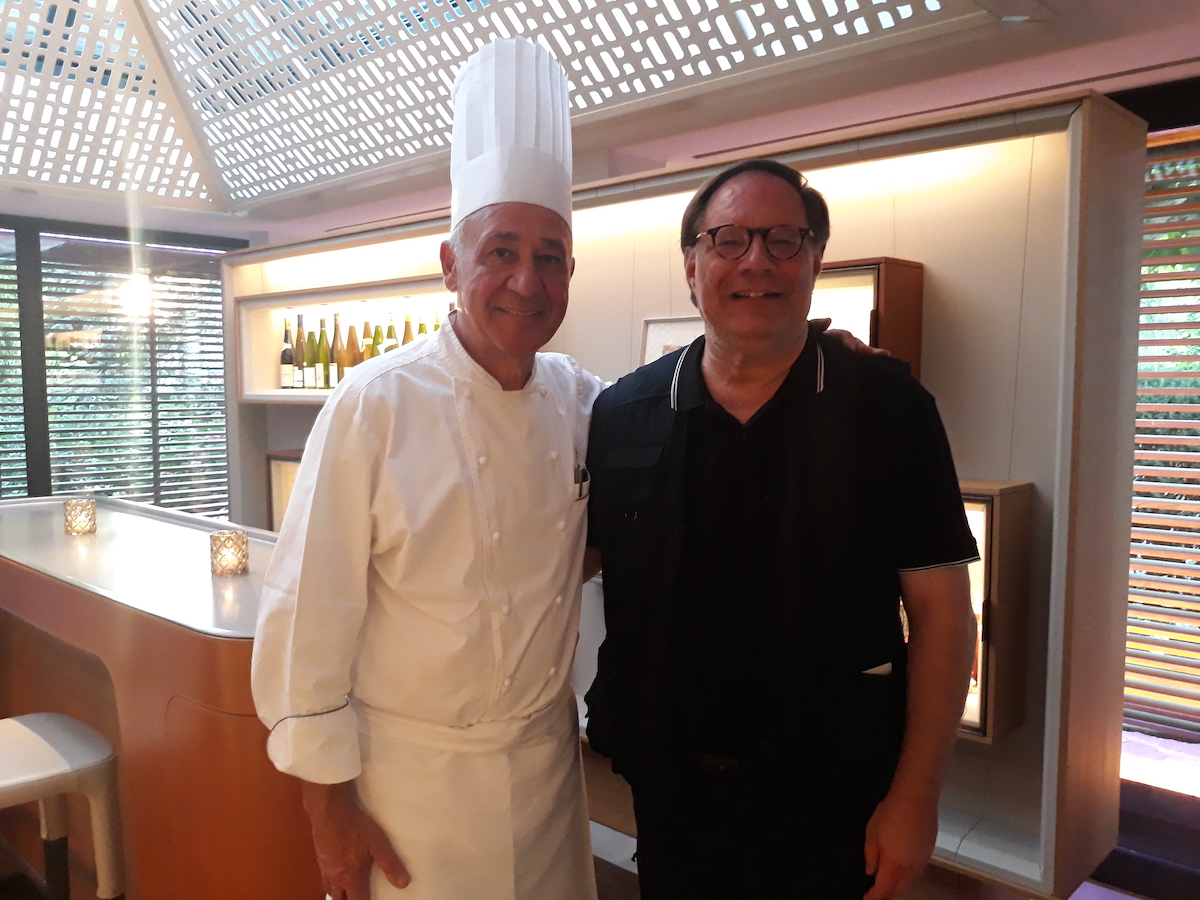
The food at l’Auberge de l’Ill is not extremely Alsatian per se, at least not in its most traditional sense, but it is certainly Alsace-influenced, very French and very typical, featuring all the ingredients and technical preparations we have all come to expect from any self-respecting French restaurant. Complex and luxuriously sultry sauces, mousses, and soufflés dominate Haeberlin’s marvelous interpretation of truffles, salmon, frogs, butter, heavy cream, and just for good measure, still more butter and cream. But this culinary panorama evokes impressions (and one day, memories) of a refined and relatively light on its feet cuisine, not one that is so heavy and filling that it will keep you from wanting to eat for the following two or three days. This state of affairs exists inasmuch Haeberlin actually knows how to cook, and knows better than to just string along (and not just the ingredients, I would add) a series of cool-sounding but completely unrelated ingredients on your plate. In other words, you will find that the completely nonsensical juxtaposition of aromas and flavours that have no place in a kindergarten kitchen, never mind a fine dining destination, that all too often plagues modern-day wannabe cool cuisines is altogether absent here.
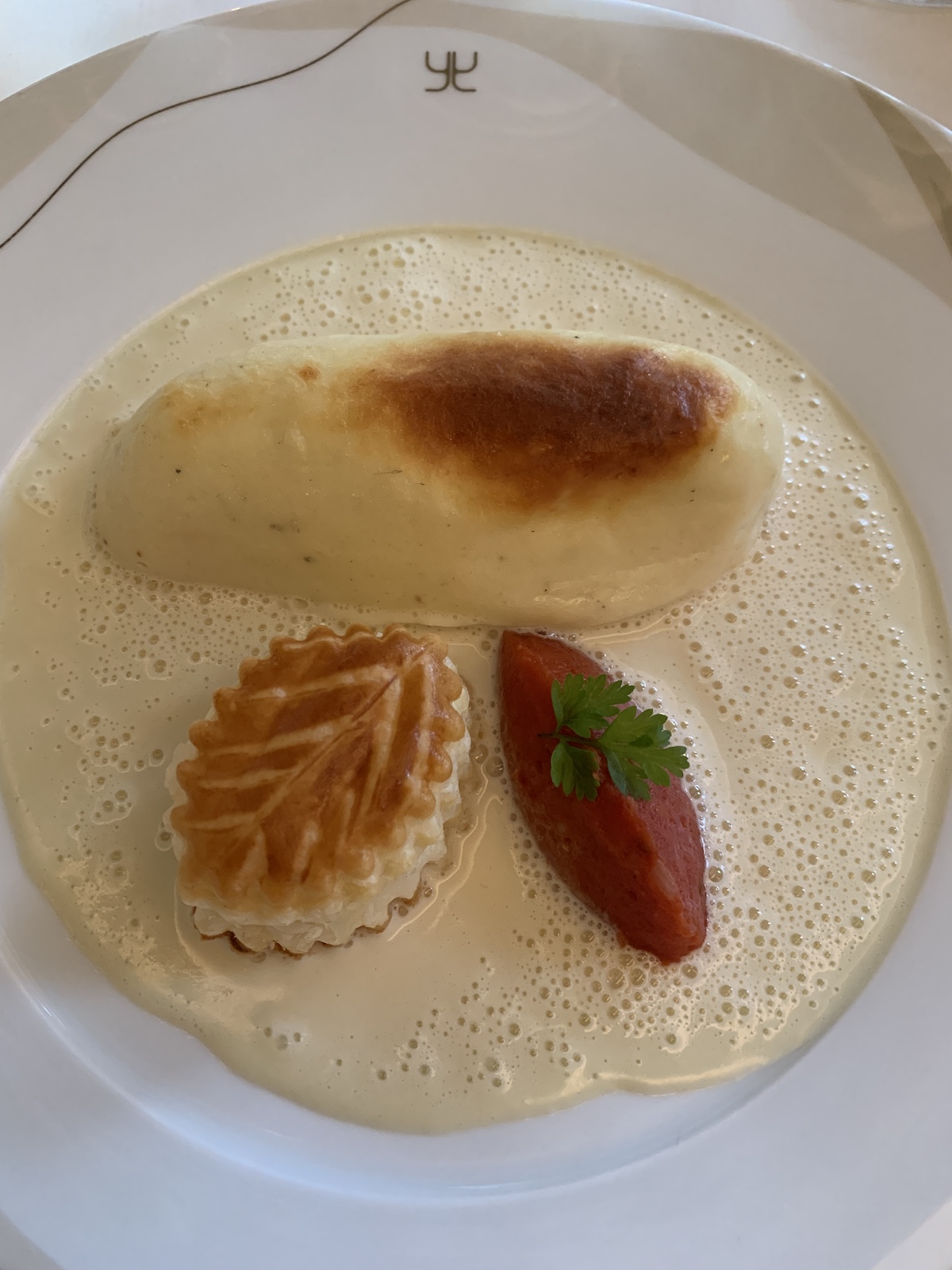
In any case, the restaurant has compiled a number of food creations over the years that have rightfully garnered a place in cooking history: examples might be the ultra-famous salmon soufflé (actually not a soufflé at all), the gibelotte (a type of stew made with rabbit meat but it can also be made with fish, featuring broth and more white wine), the mousseline of frog’s legs (made with white wine and chives) and my personal favourite, the truffle under the ash (a really large black truffle bathed in butter and baked under hot ashes and coal while snugly wrapped in wrapped in parchment paper. A few years ago, Haeberlin did introduce a series of new, rather modernist dishes that left me slightly puzzled (and others too, I hear): for example, it is my very humble opinion that trying to pair shrimp and watermelon in the same dish is asking for trouble. By contrast, his attempts at lightening up the classic dishes have fared very well, and these preparations have never been better.
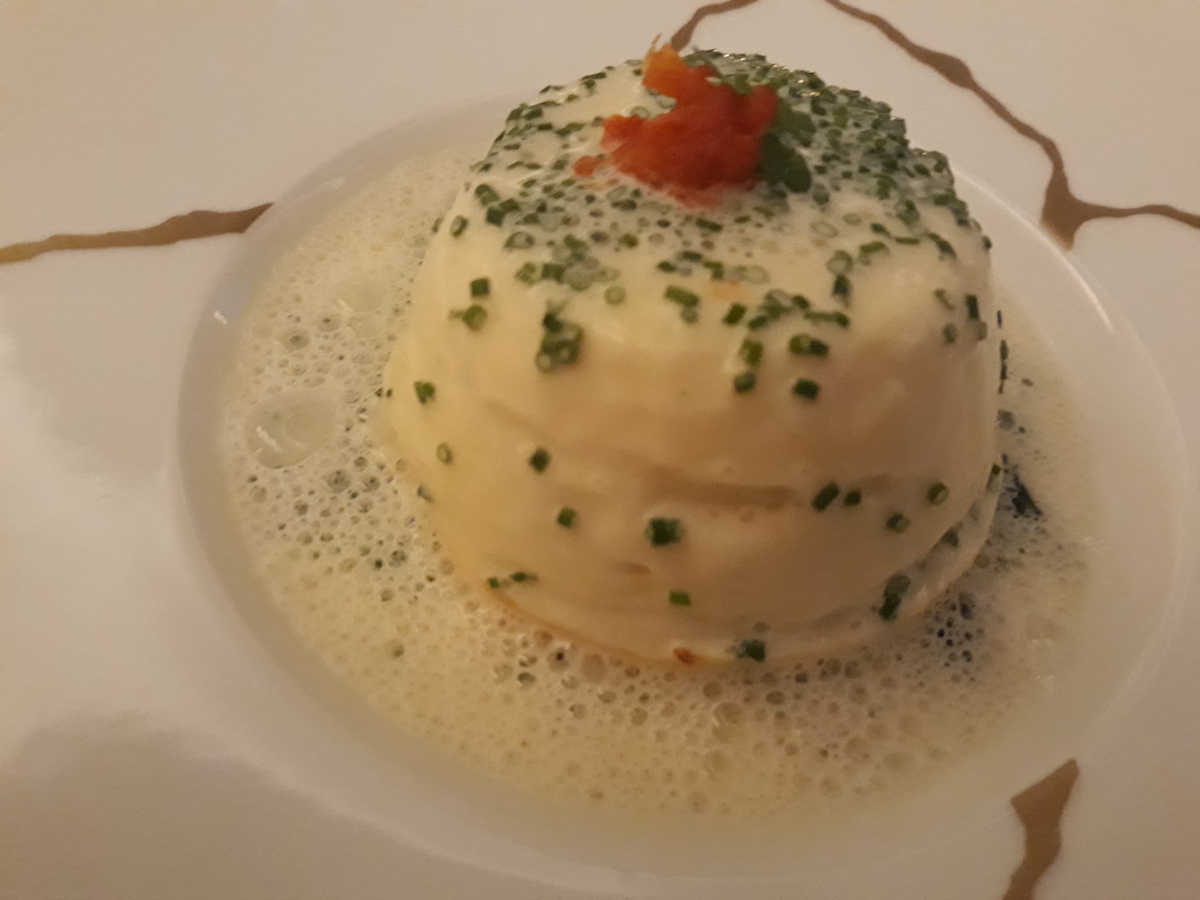
So while I’m certainly of the adventurous dining ilk, when I go to l’Auberge de L’Ill it’s the classic preparations I want to feast on, and I recommend you do too. Especially if you haven’t yet been there: to pass on trying what are some of the dining world’s truly iconic dishes would be a shame, unless you really cannot stand the thought of eating salmon, frogs, and truffles. And so it was that my latest meal there late last summer saw me doing my best impression of the elegant, casually distant and worldly diner calmly eating his morsels of frog meat and salmon mousse while in reality all I wanted to do was grab each dish with two hands and just scarf the stuff down and then lick the plate clean. Of course, I never give in to my worst (or are they better?) instincts and so I just ate slowly and carefully what was put before me. Oh well, there are worse tortures in life.
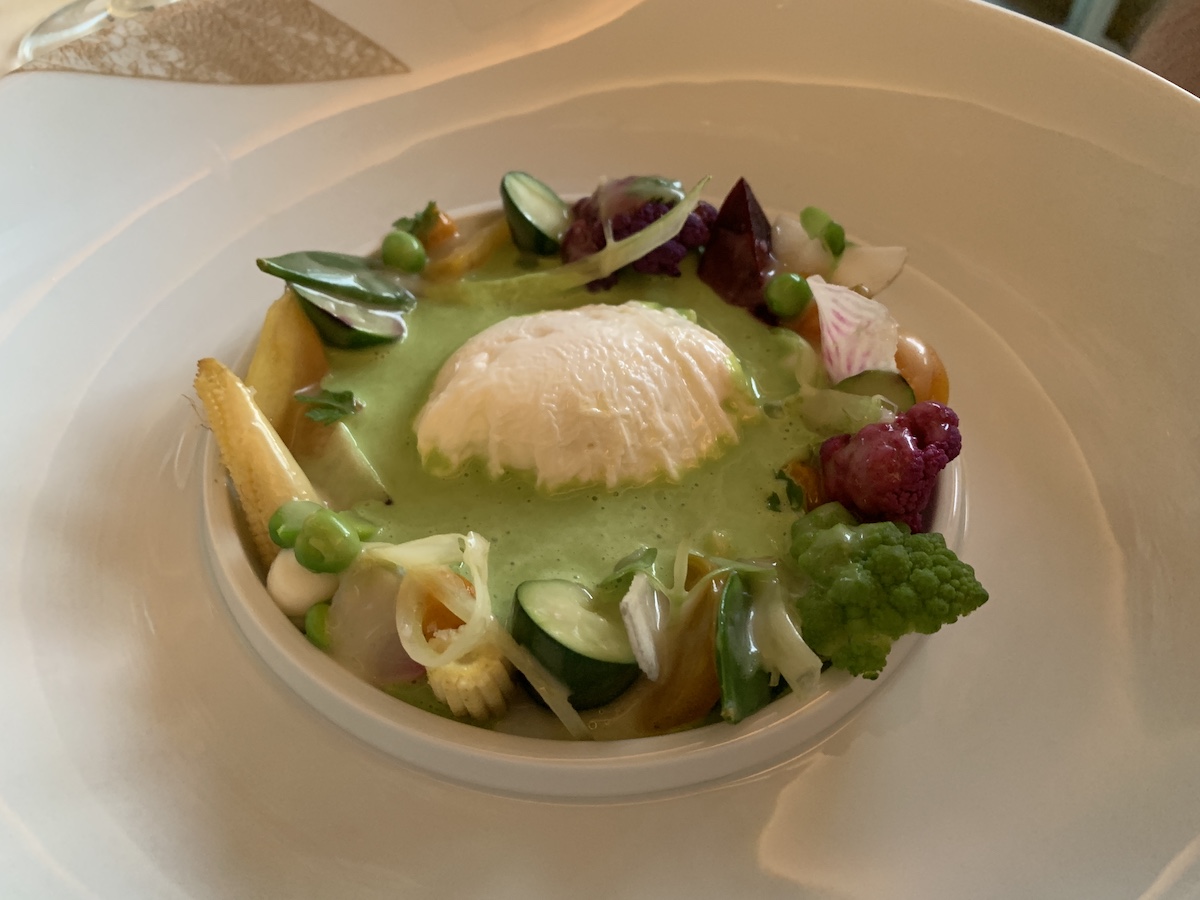
The wine experience at Auberge de l’Ill is just as great as the food. There are literally hundreds of great options to choose from and at all price points, so you don’t have to mortgage the house to drink well. On this night we enjoyed the Josmeyer 2005 Pinot Gris Sélection de Grains Nobles to start things off: I cannot begin to tell you how wonderful it is to start off a meal with a well-made sweet wine that has plenty of acidity and complexity. Such wines do not in any way satiate you and make it less likely for you to enjoy your meal, rather they enhance it given that their high acidities make it so that sipping on them prior to the meal that will follow is the Pavlovian dog bell-ringing equivalent of inducing both salivary and gastric stimulation. Josmeyer is an absolutely star producer and this Pinot Gris late harvested wine a thing of beauty, light and lively but flavourful, it proved the perfect start to our meal, and was, in many ways, the best wine of the night. Bright fresh and very precise, if not exceptionally concentrated, the Chateau de Maligny 2017 Chablis 1er cru Montée de Tonnerre picked up where the SGN left off, cleansing our palate and recalibrating it with its lemony sheen helping us deal with the slightly fatty and dry tasting dishes the meal began with. Always a standout even in warm years, the Trimbach 2011 Riesling Cuvée Fréderic Emile is a lovely luscious mouthful of Riesling that is more forward than some other recent vintages: diesel fuel, ripe orchard fruit and saline nuances mingle with chamomile and anise for a highly satisfying drink. Another lovely wine is the Henri Darnat 2008 Meursault 1er cru Clos Richemont, at now almost thirteen full years out still very youthful and very enjoyable. The Clos Richemont is located within the extremely small 1er cru Le Cras, situated on the northern edge of the Meursault commune, near Volnay and Monthélie. It is the only one with noteworthy amounts of Chardonnay plantings. The wine is big and bold, luscious yet refined, offering beautiful notes of hazelnuts and butter to go along with the peach and banana aromas and flavours. Next up two red wines, both juicy and ripely fruity in the style of the vintage. The Domaine Arlaud 2012 Morey St.Denis is in your face with gobs of ripe sweet red cherry fruit complicated by hints of balsamic oils and sweet spices. It is literally irresistible. Somewhat more restrained and less plump is the Armand Rousseau 2012 Gevrey Chambertin 1er cru Les Cazetiers, expressing Gevrey’s typical smoked beef, tar, earthy and ferrous nuances but does so with grace and refinement. A very precise, flavorful wine that will gain by a few more years in the cellar still, this struck me as a lovely Cazetiers from Rousseau. Last but not least, I want to unabashedly complement everyone involved with the wine list at the restaurant for including such a large number of Vendanges Tardives and SGN wines, as Alsace’s sweet wines are some of the world’s greatest. More importantly, they match heavenly well with dishes rich in butter, cream, onions, mushrooms truffles, egg yolks and more such are those in this neck of the French woods (Brittany and Provence Alsace is not). And so it is that when I lunch and dine at the Auberge, I always begin with a VT or SGN and finish my meal with another one: for the truly knowledgeable amongst us, it is the best way to ensure that Alsace dining memories are made (and in fact, not just Alsace dining memories).

The dishes
Plate of assorted seasonal vegetables , poached organically farmed egg and cold pea soup (L’assiette d’été végétale selon la cueillette, l’oeuf de ferme “bio” poché et soupe glacée de petits pois)
Salmon soufflé “Auberge de l’Ill” (Le saumon soufflé “Auberge de l’Ill”)
Frog mousse “Paul Haeberlin” (La mousseline de grenouilles “Paul Haeberlin”)
Roasted rack of Allaiton d’Aveyron lamb, candied carrots in a Pretzel crust (Carré d’agneau “Allaiton d’Aveyron”, carottes confites en croute de bretzel)
Red fruit tartlet (Tarte aux fruits rouges)
The wines
Josmeyer 2005 Pinot Gris Sélection de Grains Nobles 94
Chateau de Maligny 2017 Chablis 1er cru Montée de Tonnerre 91
Trimbach 2011 Riesling Cuvée Fréderic Emile 93
Henri Darnat 2008 Meursault 1er cru Clos Richemont 92
Domaine Arlaud 2012 Morey St.Denis 92
Armand Rousseau 2012 Gevrey Chambertin 1er cru Les Cazetiers 93

 中文
中文
